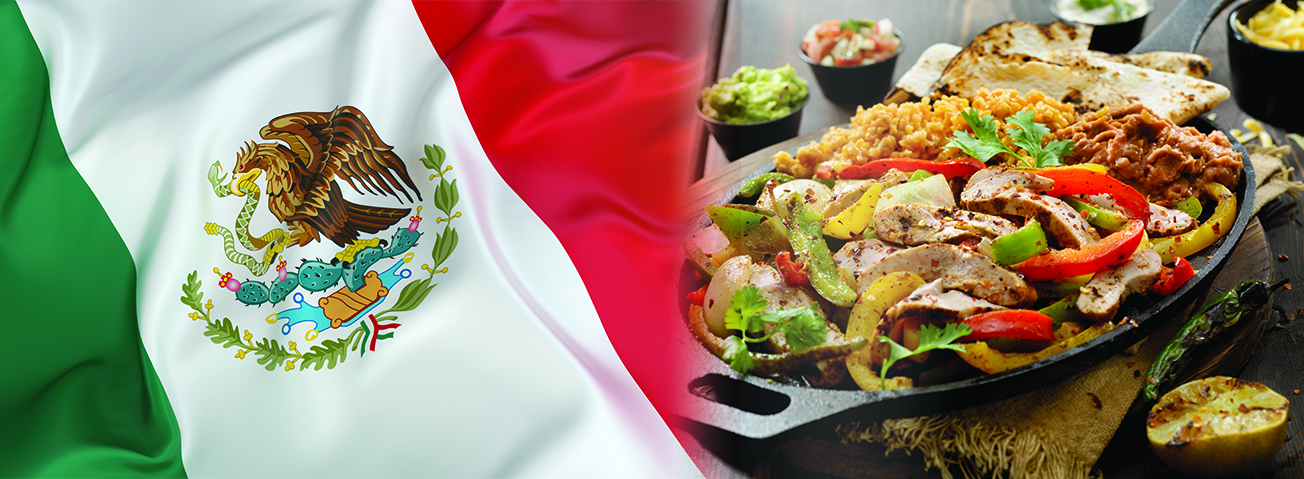
Meat Consumption in Mexico, Led by Poultry, Will Continue Rising Over Next Decade, USDA Projections Show
- by Steven Zahniser and James Hansen
- 8/29/2024
Meat consumption in Mexico is expected to rise in the coming decade, according to the USDA Agricultural Projections to 2033. Mexico’s consumption of poultry, pork, and beef combined is projected to reach 82.5 kilograms per capita in 2033, about two-thirds of projected total U.S. meat consumption (124.0 kilograms).
Poultry consumption is projected to increase the most, from 38.3 kilograms per person in 2023 to 43.8 kilograms in 2033. Projections put pork consumption at 22.6 kilograms per person in 2033, up from 20.2 kilograms, and beef consumption is projected to increase slightly from 15.7 kilograms per person to 16.0 kilograms.
The anticipated increase in Mexico’s meat consumption over the coming decade would continue a long-term trend linked to the North American Free Trade Agreement (NAFTA), implemented by the United States, Mexico, and Canada on January 1, 1994. Among its many effects, NAFTA created a more integrated market among the three countries for grains, oilseeds, livestock, animal products, fruit, vegetables, and other agricultural goods. For Mexico, NAFTA marked a transformation from the strict administration of imports through licensing requirements and tariffs to a system of tariff- and quota-free trade with the United States and Canada.
The phasing out of NAFTA’s transitional restrictions on agricultural imports from the United States and Canada made it easier for Mexico to import not only meat but also the feedstuffs used to produce meat. As a result, Mexico’s feedstuff imports from the United States and Canada grew substantially after NAFTA’s implementation—enabling a large expansion in Mexico’s domestic meat production. Between 1993 and 2023, Mexico’s corn imports more than quadrupled, soybean imports increased by 190 percent, and soybean meal imports grew by 471 percent, with most of these imports going toward feed use. Over the same period, Mexico’s meat production increased 183 percent for chicken, 80 percent for pork, and 26 percent for beef, according to USDA’s Production, Supply, and Distribution estimates.
NAFTA’s successor agreement—the United States-Mexico-Canada Agreement (USMCA), which took effect on July 1, 2020—largely continues NAFTA’s market access provisions, including those governing agricultural trade between the United States and Mexico. The USDA Agricultural Projections to 2033 assume that the USMCA’s market access provisions remain in effect throughout the projection period (2024–33). Based on the assumption that current policies remain in place, the projected increase in Mexico’s per capita meat consumption is supported by expectations that meat imports will grow and that domestic meat production will increase. Specifically, Mexico’s chicken and pork imports are projected to grow over the coming decade by 31 percent and 17 percent, respectively, although beef imports decrease by 5 percent. At the same time, Mexico is expected to continue to import sizable quantities of corn, soybeans, and soybean meal for use in livestock production. Meat production in Mexico is projected to increase between 2023 and 2033 by 22 percent for chicken, 24 percent for pork, and 25 percent for beef.
This article is drawn from:
- Office of the Chief Economist, World Agricultural Outlook Board (2024). USDA agricultural projections to 2033. U.S. Department of Agriculture.
You may also like:
- Zahniser, S., Angadjivand, S. & Hertz, T. (2015, April 6). NAFTA at 20: With Regional Trade Liberalization Complete, Focus Shifts to Other Methods of Deepening Economic Integration. Amber Waves, U.S. Department of Agriculture, Economic Research Service.


